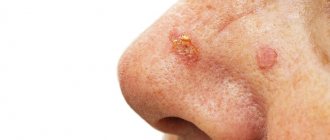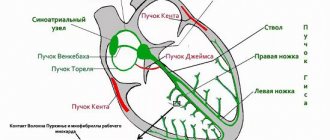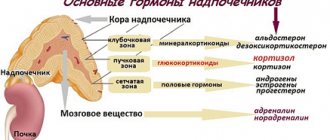SSS – dysfunction of the sinus node of an organic nature, includes:
- Persistent sinus bradycardia with heart rate <40 beats/min.
- Stopping (sinus arrest) of the sinus node, long-term or short-term with pauses of more than 2 seconds.
- Repeated SA blockades with pauses of more than 2 seconds.
- Slow or unstable recovery of sinus node function after electrical or pharmacological cardioversion, as well as after spontaneous cessation of an attack of supraventricular tachycardia.
- Alternating attacks of atrial fibrillation and sinus bradycardia (pauses of more than 2 seconds, heart rate less than 45 beats/min) – bradycardia-tachycardia syndrome.
In patients with acute myocardial infarction, up to 5% of dysfunctions of the ACS are detected.
Reasons for the development of SSSU
Impairments in the formation of impulses in the sinus node can be divided into primary, caused by organic damage to the node itself, and secondary, caused by extracardiac processes.
Sick sinus syndrome
The clinical course of sick sinus syndrome is varied. In some patients, the SSSU clinic may be absent for a long period of time, while others experience severe rhythm disturbances, accompanied in severe cases by headaches, dizziness, and Morgagni-Adams-Stokes attacks. Possible hemodynamic disorder as a result of a decrease in stroke and minute volume, accompanied, among other things, by the development of cardiac asthma, pulmonary edema, coronary insufficiency (angina pectoris, less commonly, myocardial infarction).
In the clinic of sick sinus syndrome, there are two main groups of symptoms: cerebral and cardiac. Cerebral symptoms in mild rhythm disturbances are manifested by fatigue, irritability, forgetfulness, and emotional lability. Elderly patients experience a decline in intelligence and memory. With the progression of SSSS and cerebrovascular insufficiency, cerebral symptoms increase. Pre-syncope and fainting develop, which are preceded by the appearance of tinnitus, severe weakness, a feeling of fading or cardiac arrest. Fainting of cardiac origin in Morgagni-Edams-Stokes syndrome occurs without warning signs or convulsions (with the exception of cases of prolonged asystole).
The skin turns pale, becomes cold, covered in cold sweat, and blood pressure drops sharply. Fainting can be provoked by coughing, turning the head sharply, or wearing a tight collar. Fainting usually goes away on its own, but prolonged fainting may require emergency treatment. Severe bradycardia can cause dyscirculatory encephalopathy, characterized by increased dizziness, the appearance of momentary memory loss, paresis, “swallowing” of words, irritability, insomnia, and memory loss.
Cardiac manifestations of sick sinus syndrome begin with the patient feeling a slow or irregular pulse, chest pain (due to a lack of coronary blood flow). Associated arrhythmias are accompanied by palpitations, interruptions in heart function, shortness of breath, weakness, and the development of chronic heart failure.
As SSSS progresses, ventricular tachycardia or fibrillation often occurs, increasing the likelihood of sudden cardiac death. Other organic manifestations of sick sinus syndrome may include oliguria due to renal hypoperfusion; disorders of the gastrointestinal tract, intermittent claudication, muscle weakness due to insufficient oxygenation of internal organs and muscles.
Objectively, sinus bradycardia (especially at night), persisting during physical activity, sinoauricular block and ectopic rhythms (atrial fibrillation and flutter, paroxysmal tachycardia, supraventricular, and less often ventricular extrasystole) are detected. After a period of ectopic rhythms, the restoration of normal sinus rhythm is slow and occurs after a previous long pause.
Prices
Since the pathologies are very different, their treatment methods also differ significantly from each other. Vascular surgery in Israel carries out a variety of operations by type, level of complexity, etc. which effectively help eliminate the problem and save a person’s life.
In Israel, the following operations can be performed depending on the type of disease.
For atherosclerosis of the coronary arteries and coronary heart disease, coronary angioplasty combined with stenting, as well as coronary artery bypass grafting, are performed. In case of atherosclerosis of the carotid arteries, they are stenated.
Aortic aneurysm is treated using standard prosthetics, graft stenting, aortic root reconstruction, aneurysm clipping, etc.
Endovasal surgery (obturation with special coils) helps to cure aneurysms and malformations of the cerebral arteries.
For varicose veins, effective methods are laser coagulation, foam sclerotherapy, stripping, etc.
Hemangiomas are treated by excision, sclerotherapy, cryosurgery, or laser surgery.
Prices for vascular surgery procedures in Israel are not very high, which is why treatment in clinics in this country is so popular. The cost will vary significantly depending on the treatment method, equipment and drugs used, doctor, clinic and many other factors. You can send a request to find out data for your specific case. The high level of professionalism of doctors and the use of advanced technologies guarantee a quick recovery.
The main goal is the patient’s speedy recovery and restoration of his ability to work. Treatment conditions are created in such a way that the patient feels completely comfortable - this has a good effect on the treatment process.
Approximate prices for the Department of Cardiology and Cardiac Surgery
| Disease | Approximate price, $ |
| Prices for mitral valve replacement in Israel | 49 200 — 55 720 |
| Prices for treatment of atrial fibrillation | 22 720 — 36 310 |
| Prices for treatment of hypertrophic cardiomyopathy | 39 420 |
| Prices for treatment of thoracic aortic aneurysm | 101 279 — 112 279 |
| Prices for coronary artery bypass surgery | 48 610 |
| Prices for diagnosing hypertension | 5 630 |
| Prices for treatment of abdominal aortic aneurysm | 71 960 — 74 960 |
| Prices for treatment of coronary heart disease | 9 260 — 23 110 |
Publications in the media
Sick sinoatrial node syndrome (SSNS) is the inability of the sinoatrial node (SNA) to adequately perform the function of the center of automaticity • Partial or complete loss of the SNA as the central pacemaker of the heart leads to the occurrence of brady- and tachyarrhythmias: sinus bradycardia, alternation of severe sinus bradycardia with paroxysms of atrial tachycardia or atrial fibrillation, atrial extrasystole, supraventricular migration of the pacemaker • The severity of the clinical course of SSSPU depends on the severity of sinoatrial blockade • There are primary and secondary forms of SSPSP - the primary is caused by organic damage to the sinus-atrial zone, the secondary - by autonomic dysfunction of the SSP. Statistics • Prevalence - 0.03-0.05% in the general population • Predominant gender - women.
Etiology • In a significant proportion of cases, the basis of SSPU are genetically determined degenerative changes in the SS, the conduction system of the heart and atria, clinically manifested in the 6th–7th decade of life • Genetic predisposition is transmitted to a greater extent through the female line • Ischemic damage to the SS (coronary atherosclerosis , myocardial infarction) • Heart damage in diabetes • Myocarditis (rheumatic carditis, diphtheria) • Pericarditis • Amyloidosis, hemochromatosis, glycogenosis • Hypothyroidism • Traumatic damage to the SPU (cardiac contusions, heart surgery) • Poisoning with organophosphorus compounds, fungi • Dysfunction of the parasympathetic regulation of the SPU ( carotid sinus hypersensitivity syndrome, etc.).
Clinical manifestations • Dizziness, short-term loss or confusion, darkening of the eyes, fainting (in 50–70% of cases), sudden falls with injuries and fractures • Feeling of palpitations or frequent interruptions in heart rhythm • The first manifestations of SSPS may be paroxysmal tachycardia, atrial fibrillation arrhythmia or Morgagni–Adams–Stokes attack.
Clinical and electrocardiographic signs. SSSPU can manifest itself in seven variants • Persistent or episodic sinus bradycardia • Rigid sinus rhythm • SSP failure (see Sinoatrial node failure) • Sinauricular block of the second degree • Brady-tachyarrhythmia - alternation of sinus bradycardia with flutter, atrial fibrillation or atrial tachycardia • Post-tachycardia depression of SPU - slow restoration of sinus rhythm after pacemaker, cardioversion or cessation of supraventricular tachycardia (recovery time of sinus node function exceeds 1400 ms) • Chronotropic insufficiency - discrepancy between the frequency of sinus rhythm and the needs of the body.
Diagnostics • 24-hour Holter ECG monitoring • Electrophysiological studies • Differential diagnosis of primary and secondary forms - autonomic heart block (administration of atropine and proponolol).
Treatment is pacemaker implantation in AAI or DDD mode with concomitant AV conduction impairment.
Synonyms • Bradycardia-tachycardia syndrome • Short's syndrome.
Abbreviations • SSSPU - sick sinoatrial node syndrome • SPU - sinoatrial node.
ICD-10 • I49.5 Sick sinus syndrome
Diagnosis of the disease
The most complex electrophysiological studies should be carried out only when the diagnosis of sinus node dysfunction raises certain doubts.
- Valsalva maneuver. The simplest vagal tests with holding the breath while taking a deep breath (including the Valsalva maneuver), performed alone or in combination with straining, sometimes reveal sinus pauses exceeding 2.5–3.0 s, which must be differentiated from pauses caused by disorders AV conduction. The detection of such pauses indicates increased sensitivity of the sinus node to vagal influences, which can occur in both VDS and SSSU. If such pauses are accompanied by clinical symptoms, an in-depth examination of the patient is required to determine treatment tactics.
- Carotid sinus massage. The carotid sinus is a small formation of the autonomic nervous system located at the beginning of the internal carotid artery above the branch of the common carotid artery. The carotid sinus receptors are connected to the vagus nerve. The carotid sinus reflex under physiological conditions causes bradycardia and hypotension due to irritation of the vagus nerve and the vascular regulatory center in the medulla oblongata. With a hypersensitive (hypersensitive) carotid sinus, pressure on it can cause sinus pauses exceeding 2.5–3.0 s, accompanied by a short-term disturbance of consciousness. Before massage of the carotid zones, such patients are advised to assess the state of blood flow in the carotid and vertebral arteries, because Massaging arteries with pronounced atherosclerotic changes can lead to dire consequences (severe bradycardia up to loss of consciousness and asystole!). It is important to emphasize that carotid sinus syndrome can, on the one hand, develop against the background of normal sinus node function, and on the other hand, it does not exclude the presence of CVS.
- The tilt test (passive orthostatic test) is considered today as the “gold standard” in the examination of patients with syncope of unknown etiology. Load testing (bicycle ergometry, treadmill test).
- Stress testing assesses the ability of the sinus node to increase its rhythm in accordance with an internal physiological chronotropic stimulus.
- Holter monitoring. Ambulatory Holter monitoring, when performed during normal daily activity, appears to be a more valuable physiologic method for assessing sinus node function than stress testing. The alternating occurrence of bradyarrhythmias and tachyarrhythmias in patients with SSSS is often not detected on a conventional resting electrocardiogram.
- Studying the function of the sinus node using the TEES method. An indicator of automatic activity of the sinus node is the duration of the sinus pause from the moment of termination of stimulation (the last artifact of the electrical stimulus) to the beginning of the first independent P wave. This period of time is called the time of recovery of sinus node function (RSFRU). Normally, the duration of this period does not exceed 1500–1600 ms. In addition to the VVFSU, another indicator is calculated - the corrected time for recovery of sinus node function (CVVFSU), which takes into account the duration of the VVFSU indicator in relation to the initial frequency of sinus rhythm.





